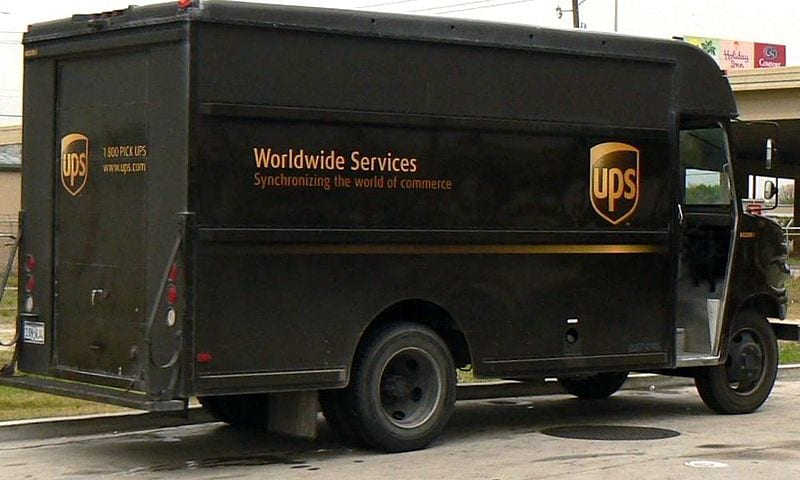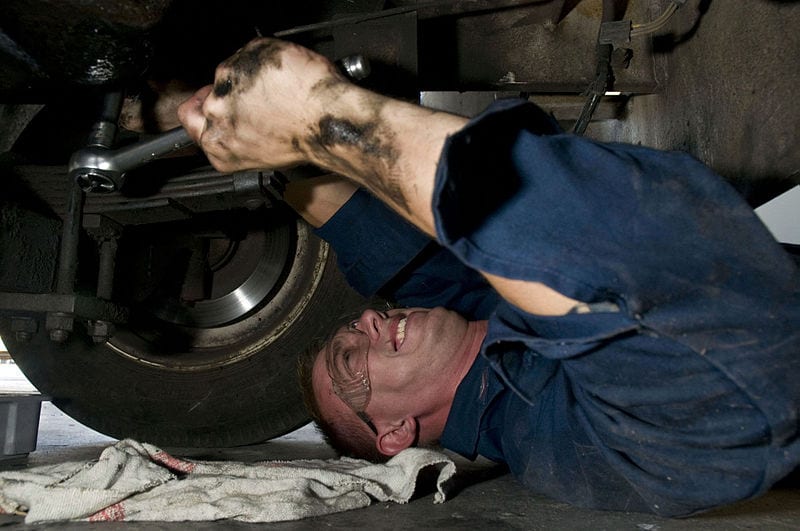Most of us rely on a car to get us to work, to the store, to pick up the kids, etc. Unless you live in a town or city with amazing public transportation (or horrific congestion), chances are pretty good you own a vehicle. The simple fact is that Americans love their cars and have for decades.
So let’s explore some interesting things about driving that’ll make you a little more aware and knowledgeable next time you’re cruising around your city or town.
Do you ever see UPS trucks on the road and notice that you never see the drivers taking left turns? Seems like a small thing, but it’s actually company policy based on a very specific thought process. UPS designs its vehicle routing software to eliminate as many left-hand turns as possible. It seems counter-intuitive – while the UPS man or woman driving the truck is out delivering packages, they aren’t always taking the shortest route possible.
There are a couple reasons why UPS does this. The first is safety. Left-hand turns are relatively unsafe and usually create traffic buildup, two big negatives for a company where delivering packages safely and on time is the goal. A study by the US National Highway Traffic Safety Association shows that turning left is indeed much more dangerous than making a right turn: roughly 61% of car accidents that occur while turning or driving through an intersection involve left turns as compared to just over 3% for right-hand turns.

Photo Credit: Wikimedia Commons
Left-hand turns are also less fuel efficient because cars idle longer while waiting to turn, which burns more gas. The company doesn’t ban their drivers from turning left, but it is rare: only an estimated 10% of UPS drivers’ turns are to the left. UPS makes 18 million deliveries each day in the United States, so you know that they have this method down to a science.
Speaking of lefts, many of us are taught from a young age that the left lane is for faster traffic and that if you’re driving slower than your peers on the road, you should stay to the right. But, believe it or not, some people are still completely oblivious to this rule of the road. Which is why you see so many annoyingly slow drivers in the left lane on highways across the land.
But is it against the law to drive slow in the left lane, or is just annoying, inconvenient, and occasionally dangerous? Well, it depends on where you live. You might not be aware of this, but in 29 U.S. states, cars that are moving slower than the surrounding speed of traffic need to drive in the right lane, and in 11 states, the rules state that the left lane is only for passing or turning.

Photo Credit: Wikipedia
More and more states have added laws to crack down on slow left-hand lane driving. Virginia’s left lane law took effect in July 2017 and from July 1, 2017 until April 3, 2018, almost 2,000 drivers in that state were fined $100 for driving too slow in the left lane. Michigan recently jumped on the left lane bandwagon too, in March 2018. The new law there states that the left lane is for passing only. Several states, including Washington, Texas, and Ohio, are aggressively ticketing drivers who are violating the lane laws. So not only does driving slow in the left lane clog up traffic (and piss people off), but now it will actually cost drivers in many U.S. states. Bottom line: stay to the right unless you’re passing or leading the pack.
Now let’s move on to car maintenance. Every time you get your oil changed, you get one of those nifty stickers in the corner of your windshield to remind you to get your oil changed in another 3,000 miles. It’s the number we’ve had drilled into our heads since we first took the wheel. But do you really need to get your oil changed every 3,000 miles?

Photo Credit: Flickr,Robert Couse-Baker
Austin Davis, who runs the website Trust My Mechanic, says that mileage milestone is a sham: “The necessity of 3,000 mile oil changes is a myth that has been handed down for decades.” Davis says that the “oil change industry” has pushed customers into thinking that they need oil changes frequently when they really don’t.
Others point out that improvements in oils and engines have evolved tremendously, thus making the 3,000 mile mark a falsehood these days. Auto manufacturers today routinely call for oil changes on vehicles every 7,500 or 10,000 miles. And if your car’s engine uses full-synthetic motor oil, you might be able to go 15,000 miles between services. But most of us (myself included) continue to get their oil changed every 3,000 miles, and those service bays from coast to coast are always packed with cars and customers happily parting with their money.
There are some factors that might make an engine require more frequent trips to the lube shop for an oil change: frequent stop-and-go driving, extended idling, driving only short distances, rough and dusty roads, and driving in extreme hot and cold temperatures. Oh, and one more thing: do yourself a favor and look at your owner’s manual to see what the manufacturer recommends for oil changes. I’m willing to bet a lot of people have never done that…

Photo Credit: Wikimedia Commons
Now here’s another maintenance issue that only concerns those who live in cold climates. This is something you see everywhere in winter: people shivering in their driveways and on the street with their cars idling while they let their engine warm up. Should you warm up your car before driving it when it’s cold outside?
Surprisingly, the answer from the experts is a resounding “no.” It turns out this is not a good idea for your vehicle when you look at it long-term. Letting your car idle to warm up on cold mornings strips away oil from your engine’s pistons and cylinders, which can lead to major problems.
Internal combustion engines use pistons to compress a mixture of air and vaporized fuel within a cylinder. This mixture ignites to create a combustion event: basically a small explosion that makes your engine go. But when your engine is cold, gasoline has a harder time vaporizing. Therefore, it’s less likely to create the correct ratio of air and vaporized fuel required to create combustion.

Photo Credit: Pixabay
Modern engines often try to make up for the incorrect ratio by adding more fuel – often, too much fuel. That extra gasoline can wash away the lubricating oil when the engine is running cold. So what’s to be done? Well, the best way to actually get your engine warm is to drive. Auto experts say the maximum time you should idle your car in cold temperatures is 30 seconds. Don’t jump in and floor it, but drive nice and steady for the first part of your drive. The “warming up your car” myth is leftover from the days when most cars had carbureted engines instead of electronic fuel injection – and it’s been over 30 years since the switch was made.
So on those miserable winter mornings, scrap the ice off your windows, jump in, and drive away (nice and steady).
Now that you have all this excellent knowledge rattling around inside your brain, get out there and take to the open road!






